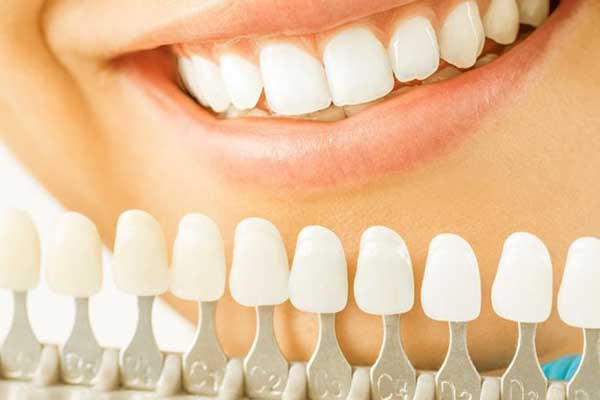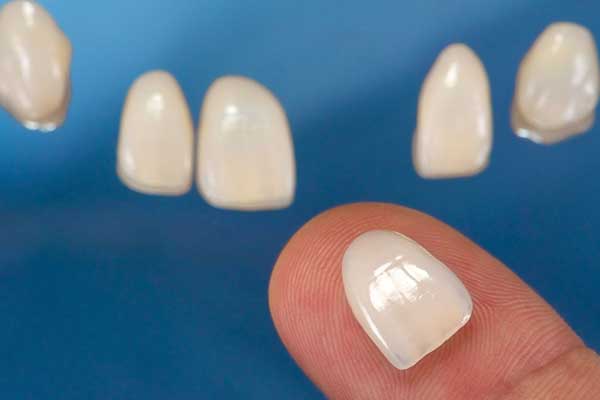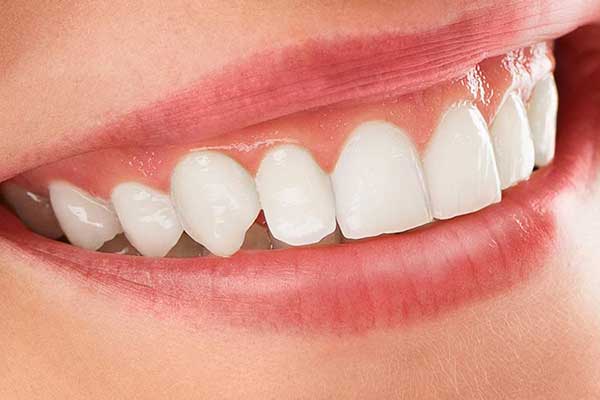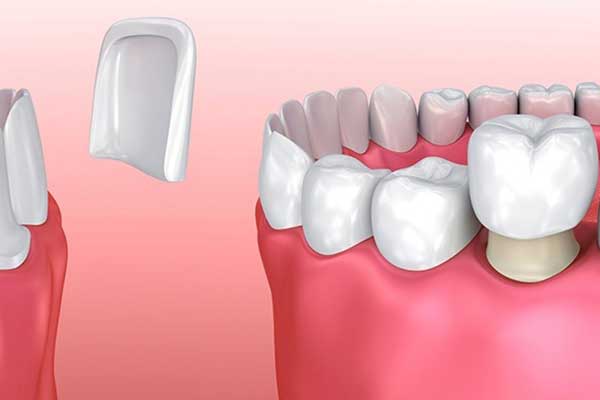Composite Bonding on One Tooth: An Effective Solution for Smile Enhancement
Are you looking for a simple and effective way to enhance your smile? Composite bonding on one tooth might be the solution you’ve been searching for. This dental procedure is gaining popularity as a cost-effective and minimally invasive treatment option for various cosmetic dental issues.
In this article, we will explore the process of composite bonding, its benefits, and why it has become a popular choice for smile enhancement.
Table of Contents
- Introduction
- What is Composite Bonding?
- The Process of Composite Bonding
- Advantages of Composite Bonding on One Tooth
- Conditions Suitable for Composite Bonding
- How Long Does Composite Bonding Last?
- Composite Bonding vs. Veneers
- Caring for Bonded Teeth
- Potential Risks and Limitations
- The Cost of Composite Bonding
- Finding a Skilled Cosmetic Dentist
- Composite Bonding: Before and After
- Common Misconceptions About Composite Bonding
- Frequently Asked Questions (FAQs)
- Conclusion
- FAQs
1. Introduction
A confident smile can significantly impact your self-esteem and overall appearance. Dental imperfections, such as chipped, discolored, or misshapen teeth, can make you feel self-conscious. Composite bonding on one tooth offers a simple and non-invasive solution to address these concerns.
2. What is Composite Bonding?
Composite bonding is a cosmetic dental procedure that involves applying a tooth-colored resin material to the surface of a tooth to enhance its appearance. This composite resin is carefully shaped and polished to blend seamlessly with the surrounding teeth, resulting in a natural-looking smile.
3. The Process of Composite Bonding
The process of composite bonding typically involves the following steps:
Step 1: Consultation and Examination
During your initial consultation, a skilled cosmetic dentist will evaluate your oral health and discuss your smile goals. They will determine if composite bonding is suitable for your specific case.
Step 2: Tooth Preparation
In most cases, minimal tooth preparation is required for composite bonding. The dentist will gently etch the tooth’s surface and apply a conditioning liquid to create a stronger bond between the tooth and the composite resin.
Step 3: Composite Application
The dentist will carefully apply the tooth-colored composite resin to the prepared tooth. They will sculpt and shape the material to achieve the desired appearance. Multiple layers of resin may be applied, with each layer being hardened using a special light.
Step 4: Finishing Touches
Once the composite resin has hardened, the dentist will trim, shape, and polish the bonded tooth to ensure it blends seamlessly with the rest of your teeth. This final touch enhances the aesthetics and provides a smooth, natural finish.
4. Advantages of Composite Bonding on One Tooth
Composite bonding offers several advantages as a cosmetic dental treatment:
a. Quick and Painless Procedure
Composite bonding is a relatively quick procedure that can often be completed in a single dental visit. It requires minimal or no anesthesia, as the process is usually painless.
b. Cost-Effective Solution
Compared to other cosmetic dental treatments, such as porcelain veneers or crowns, composite bonding is a more affordable option. It provides an excellent aesthetic outcome without breaking the bank.
c. Minimally Invasive
Composite bonding is a minimally invasive procedure that preserves most of your natural tooth structure. Unlike veneers or crowns, which require substantial enamel removal, composite bonding typically requires minimal tooth preparation.
d. Versatility in Addressing Dental Issues
Composite bonding can effectively address various cosmetic concerns, such as chipped teeth, gaps between teeth, tooth discoloration, and minor tooth misalignment. It offers versatility in smile enhancement.
e. Natural Appearance
The composite resin used in bonding is color-matched to your natural teeth, ensuring a seamless and natural-looking result. The final restoration is virtually indistinguishable from the surrounding teeth.
5. Conditions Suitable for Composite Bonding
Composite bonding is a suitable treatment option for the following conditions:
a. Chipped Teeth
If you have chipped a tooth due to an injury or accident, composite bonding can restore its shape and appearance.
b. Tooth Discoloration
Composite bonding can effectively address tooth discoloration that does not respond to traditional teeth whitening methods.
c. Gaps Between Teeth
For individuals with small gaps between their teeth, composite bonding can close the spaces and create a more uniform smile.
d. Minor Tooth Misalignment
If your teeth have minor misalignment issues, composite bonding can help improve their appearance without the need for braces or orthodontic treatment.
6. How Long Does Composite Bonding Last?
Composite bonding is a durable solution; however, the lifespan of the bonding material can vary depending on several factors. On average, composite bonding can last between five and ten years with proper care. Regular dental check-ups and good oral hygiene practices are essential for maintaining the longevity of the bonded tooth.
7. Composite Bonding vs. Veneers
Composite bonding and veneers are both cosmetic dental procedures aimed at improving the appearance of teeth. While composite bonding involves applying a tooth-colored resin directly to the tooth’s surface, veneers are thin porcelain shells custom-made to cover the front surface of the teeth.
8. Caring for Bonded Teeth
To ensure the longevity and appearance of your bonded teeth, it’s important to follow these care tips:
- Maintain good oral hygiene practices, including brushing twice a day and flossing daily.
- Avoid biting or chewing on hard objects, such as ice or pens, to prevent damage to the bonded tooth.
- Limit your consumption of stain-causing foods and beverages, such as coffee, tea, and red wine.
- Visit your dentist regularly for check-ups and professional cleanings.
9. Potential Risks and Limitations
While composite bonding is generally a safe and effective procedure, it does have some potential risks and limitations. These include:
- The bonding material may chip or stain over time, requiring repair or replacement.
- Composite bonding may not be suitable for extensive tooth damage or severe misalignment cases.
- Some individuals may experience tooth sensitivity following the procedure, but it is usually temporary.
10. The Cost of Composite Bonding
The cost of composite bonding can vary depending on several factors, including the complexity of the case and the geographic location. Generally, composite bonding is more affordable than other cosmetic dental treatments, such as porcelain veneers or crowns.
11. Finding a Skilled Cosmetic Dentist
When considering composite bonding, it’s crucial to find a skilled and experienced cosmetic dentist. Take the time to research and choose a dentist who has a proven track record of delivering successful outcomes with composite bonding procedures.
12. Composite Bonding: Before and After
Composite bonding can transform your smile and enhance your overall appearance. Before committing to the procedure, ask your dentist to provide you with before and after photographs of previous patients who have undergone composite bonding. This will give you a better understanding of the potential results.
13. Common Misconceptions About Composite Bonding
There are some common misconceptions surrounding composite bonding. Let’s address a few of them:
a. Composite Bonding is Painful
Composite bonding is typically a painless procedure. Minimal tooth preparation is required, and anesthesia may not be necessary.
b. Composite Bonding is Permanent
Composite bonding is not permanent and may need to be repaired or replaced over time. However, with proper care, it can last for several years.
c. Composite Bonding is Noticeable
When performed by a skilled cosmetic dentist, composite bonding results in a natural-looking restoration that seamlessly blends with your natural teeth.
14. Frequently Asked Questions (FAQs)
Q1: Is composite bonding reversible?
Yes, composite bonding is reversible. If desired, the bonded material can be removed without causing significant damage to the underlying tooth structure.
Q2: Will composite bonding stain?
While composite bonding is stain-resistant, it can still be susceptible to discoloration over time. Avoiding stain-causing foods and beverages can help maintain its appearance.
Q3: Can composite bonding fix crooked teeth?
Composite bonding can address minor tooth misalignment issues. However, for more significant misalignment, orthodontic treatment may be necessary.
Q4: How long does the composite bonding procedure take?
The duration of the procedure can vary depending on the complexity of the case. In most instances, composite bonding can be completed in a single dental visit.
Q5: Does insurance cover composite bonding?
In some cases, insurance may provide partial coverage for composite bonding, especially if it is deemed necessary for functional reasons. However, coverage varies, and it is best to consult with your insurance provider.
15. Conclusion composite bonding on one tooth
Composite bonding on one tooth offers a convenient and effective solution for enhancing your smile. With its natural appearance, affordability, and minimally invasive nature, composite bonding has become a popular choice among individuals looking to improve their dental aesthetics.
By understanding the process, benefits, and considerations associated with composite bonding, you can make an informed decision regarding your smile enhancement journey.
16. FAQs composite bonding on one tooth
Q1: How long does composite bonding last?
Composite bonding can last between five and ten years with proper care and maintenance.
Q2: Is composite bonding reversible?
Yes, composite bonding can be reversed if desired, with minimal damage to the tooth structure.
Q3: Can composite bonding fix gaps between teeth?
Yes, composite bonding can effectively close small gaps between teeth, creating a more uniform smile.
Q4: Can composite bonding fix severe tooth misalignment?
Composite bonding is most suitable for minor tooth misalignment. Severe cases may require orthodontic treatment.
Q5: Where can I access composite bonding services?
To access composite bonding services, consult with a skilled cosmetic dentist in your area. They can evaluate your specific needs and provide personalized treatment options.






